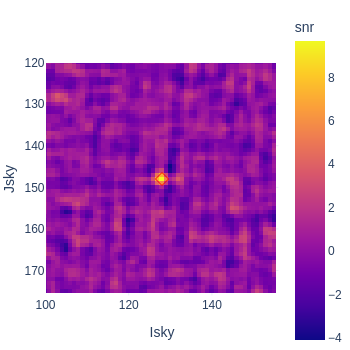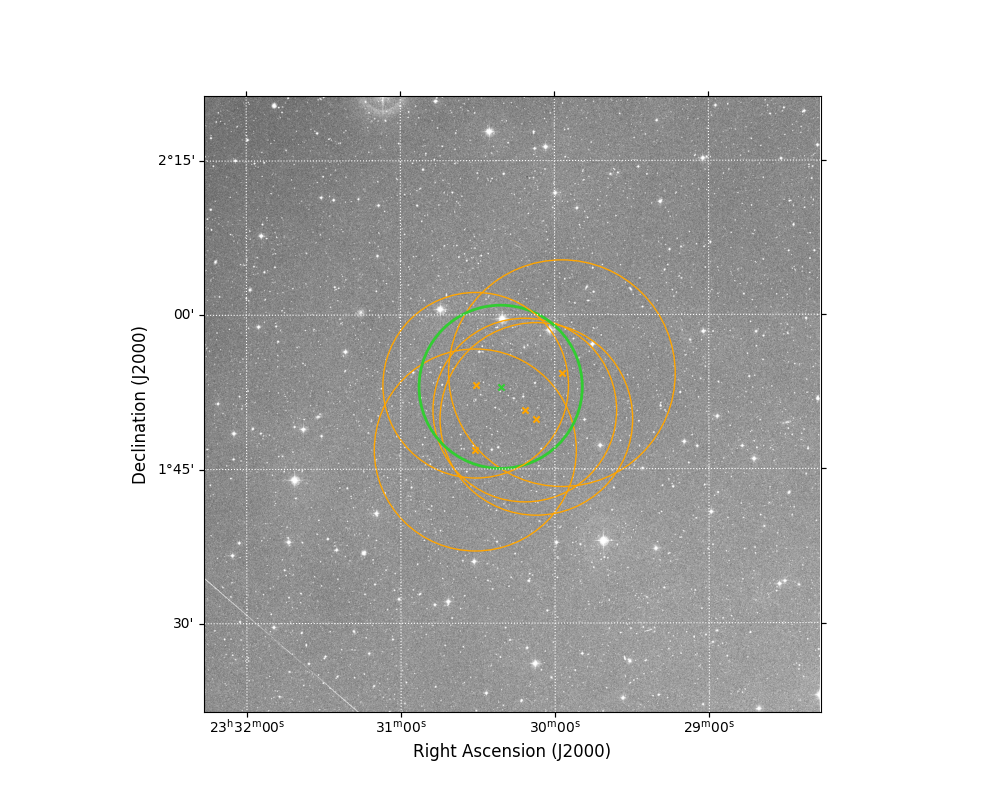Switch-on of the ECLAIRs trigger and first detection of a gamma-ray burst
The first gamma-ray burst detected by the trigger system on board ECLAIRs is GRB 240713A. The event was observed on 13 July 2024, and arrived at just the right moment to take part in the fireworks celebrating France’s bank holidays.
On that Saturday, the SVOM satellite had just completed its third week in orbit, in the middle of the instrument commissioning phase. After its launch on 22 June 2024, a number of key milestones were successfully achieved, including the switch-on of the ECLAIRs onboard computer on 25 June, the switch-on of the ECLAIRs camera and the first data acquisitions.
The detection software on board ECLAIRs had just been activated on 11 July when the first gamma-ray burst was detected 2 days later. As the real-time alert messages sent to the VHF transmitter had not yet been activated, we found the alert information in the data received via the X-band at 5:22 am (French time) at the CEA in Saclay. When we woke up and decoded the files, we were surprised to find the very first alert sequence produced at 2:02 UTC.

For GRB 240703A the software produced a sequence of 6 alerts, 3 alerts from the CRT (Count-Rate Trigger) algorithm and 3 other alerts from the IMT (Image Trigger) algorithm1.
The alert with the best signal-to-noise ratio was produced by IMT, giving a location radius of 8.8 arcminutes around the position 352.59°, 1.88° in right ascension and declination in the celestial equatorial reference frame. The software also produced an image of the sky in which the presence of a point source is clearly visible.

Confident in this detection, we then distributed to the international community the first SVOM Circular entitled The first probable GRB Located on-Board SVOM by ECLAIRs.
Following our announcement, scientists at the GBM instrument on the Fermi satellite, whose trigger algorithm had not detected the event on board, searched their ground-based data archive and found a 32-second low-energy signal coinciding in time and originating from the same region of the sky as the ECLAIRs detection. Extensive follow-up resources were then deployed, including the Neil Gehrels Swift space observatory and the Einstein Probe mission, which pointed towards the position of ECLAIRs, as well as ground-based telescopes operating in the visible. However, most of these follow-up observations began more than a day after the event, so these searches were unable to locate the event more precisely on the sky.
This very first successful detection of a gamma-ray burst by ECLAIRs, validated by Fermi/GBM, qualifies SVOM’s triggering system, which just three weeks after its launch has demonstrated its excellent performance.
- CRT and IMT: these two algorithms complement each other and analyse the camera data independently and in parallel. IMT systematically reconstructs images of the sky every 20 seconds, by deconvolving the detector image using the coded mask, and then adds them together to construct images with exposure times ranging from 40 seconds to 20 minutes. CRT works on time slices ranging from 10 milliseconds to 20 seconds, first detecting an increase in count rate above a temporal model of the background noise, and for the best time slice found in excess, it then reconstructs the image of the sky. In all these reconstructed sky images, these two algorithms search for the presence of a point source that does not correspond to the position of a source listed in the catalogue of known sources, and produce an alert message for each of these detections. ↩︎

